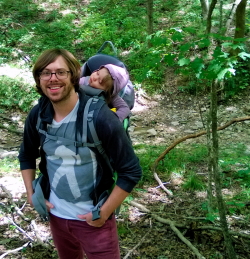
Assistant Professor (Former Lab Member)
Contact Information:
| sundem@missouri.edu | |
| Address | Missouri Resource Assessment Partnership (MoRAP) 1111 Rollins St. ABNR 333 |
Education:
Ph.D, Natural Resources – Hydrologic Modeling, University of Missouri (2016).
B.A., Geography – Geospatial Analysis, University of Missouri (2009).
Geographic Information Science Certificate, University of Missouri (2009).
Research Interests:
My research focuses on leveraging cutting-edge technologies, such as satellites, UAVs, and computational models, alongside geospatial and climatic data, to generate management grade information that can be used by planners and researchers to improve natural resource management and address the needs of various communities. Our research group takes a multidisciplinary approach, integrating diverse expertise, which leads to more comprehensive, innovative, and locally relevant data and solutions.
Publications:
Fu, Y., He, H., Zhao, J., Larsen, D., Zhang, H., Sunde, M.G., and Duan, S. 2018. Climate and Spring Phenology Effects on Autumn Phenology in the Greater Khingan Mountains, Northeastern China. Remote Sens. 10(3): 449. doi:10.3390/rs10030449
Sunde, M.G., He, H.S., Zhou, B., Hubbart, J.A., and Spicci, A. 2014. Imperviousness Change Analysis Tool (I-CAT) for simulating pixel-level urban growth. Landsc. Urban Plan. 124: 104–108. doi:10.1016/j.landurbplan.2014.01.007
Sunde, M.G., He, H.S., Hubbart, J.A., and Scroggins, C. 2016. Forecasting streamflow response to increased imperviousness in an urbanizing Midwestern watershed using a coupled modeling approach. Appl. Geogr. 72: 14–25. Elsevier Ltd. doi:10.1016/j.apgeog.2016.05.002
Sunde, M.G., He, H.S., Hubbart, J.A., and Urban, M.A. 2018. An integrated modeling approach for estimating hydrologic responses to future urbanization and climate changes in a mixed-use midwestern watershed. J. Environ. Manage. 220(September 2017): 149–162. Elsevier. doi:10.1016/j.jenvman.2018.05.025
Chinnasamy, P., and Sunde, M.G. 2016. Improving spatiotemporal groundwater estimates after natural disasters using remotely sensed data – a case study of the Indian Ocean Tsunami. Earth Sci. Informatics 9(1): 101–111. doi:10.1007/s12145-015-0238-y
Sunde, M.G., He, H.S., Hubbart, J.A., and Urban, M.A. 2017. Integrating downscaled CMIP5 data with a physically based hydrologic model to estimate potential climate change impacts on streamflow processes in a mixed-use watershed. Hydrol. Process. 31(9): 1790–1803. doi:10.1002/hyp.11150
Presentations:
“Using CMIP5 data coupled with a physically-based watershed model to estimate potential hydrologic changes in an urbanizing Midwestern watershed”, Oral presentation, US-IALE 2016 Annual Meeting, Asheville, NC.
“Predicting the hydrologic response of an urbanizing watershed to future impervious surface growth using an integrated modeling approach”, Oral presentation, 9th IALE World Congress, Portland, OR. 2015.
“Predicting streamflow response to increased imperviousness in an urbanizing watershed using an integrated modeling approach”, Oral presentation, Ecological Society of America, Annual Meeting, Sacramento, CA. 2014.
Poster, Missouri Natural Resources Conference, Annual Meeting 2014.
Poster, Missouri Natural Resources Conference, Annual Meeting 2013.
Poster, Missouri Academy of Science, Annual Meeting 2012.

